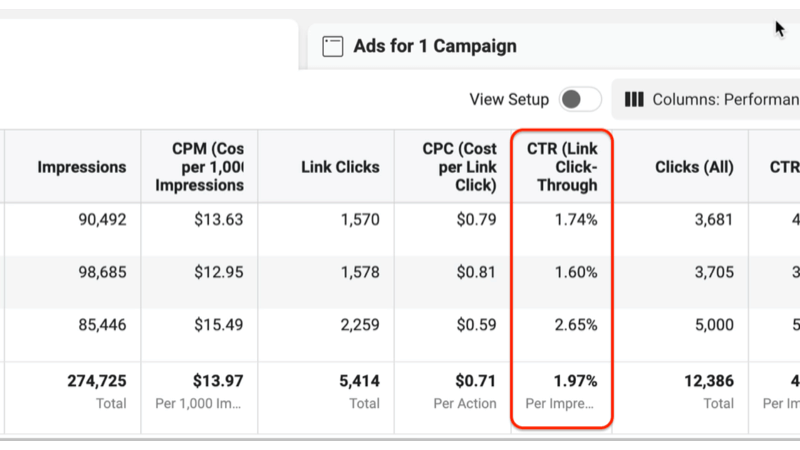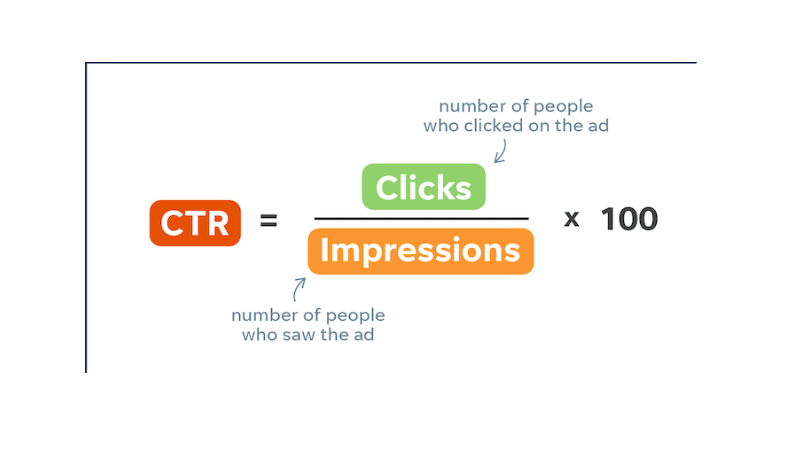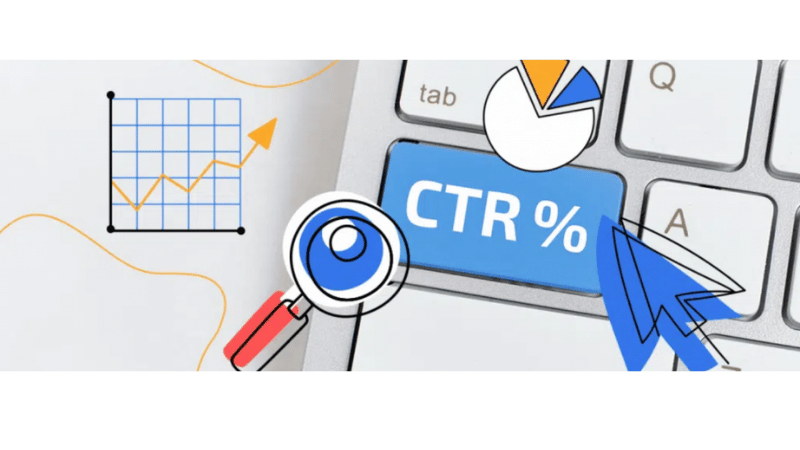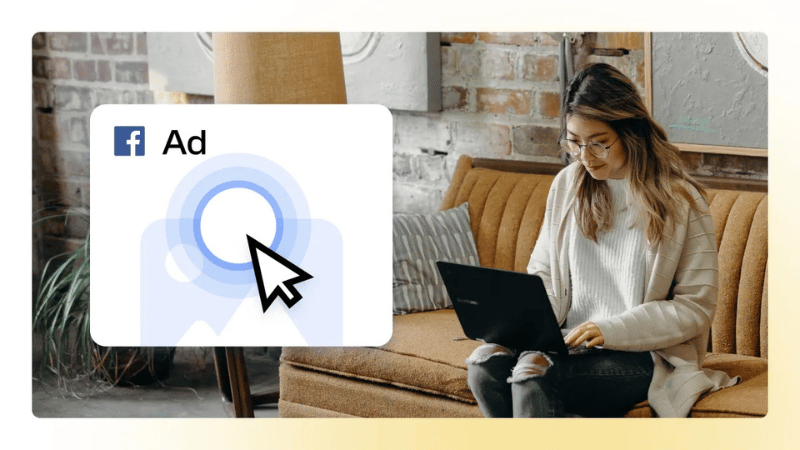You constantly run ads, but when you look at the CTR metric, you keep wondering if you’re doing okay. Many people have exclaimed the question: “What is a good CTR for Facebook Ads?”—because that is the yardstick that shows whether your ad has enough appeal for people to click on it. In reality, the answer to “What is a good CTR for Facebook Ads?” is not straightforward; it depends on the industry, the target audience, and how the campaign is set up. But if you understand the significance of CTR and know what benchmarks are reasonable, you’ll easily optimize your ads without spending much extra budget.
Facebook Ads CTR – The speaking number in marketing
When running ads on Facebook, you can see countless metrics: reach, impressions, cost per click (CPC), conversion rate… But among all that data, CTR always stands out as a “speaking number.” It is both concise and clearly reflects how customers are interacting with your ad. So, what is the real role of a good CTR? How do you interpret it to avoid confusion, and what are the misconceptions that easily lead many marketers astray?

Why is CTR important?
CTR (Click-Through Rate) is calculated by dividing the number of clicks on the ad by the number of impressions. Simply put, if your ad appears 1,000 times and receives 50 clicks, the CTR is 5%. This number may seem simple, but it carries immense significance in measuring effectiveness.
A high-CTR campaign often indicates that the ad content is engaging, the visual or video is attractive, and, importantly, the targeting is spot on for the interested audience. CTR is like a “quick emotional gauge” to know if customers want to stop and click. Instead of waiting until the end of the campaign to see sales results, just by looking at the CTR, you can guess whether the ad is heading in the right direction or needs immediate adjustment.
Furthermore, CTR is directly related to cost. Facebook tends to prioritize displaying ads that receive many clicks, thereby reducing the Cost Per Impression (or increasing Relevance Score, which lowers CPC). In other words, CTR not only helps you understand customers but also helps optimize your ad budget.
How to read CTR to understand customers

Many people running ads often view CTR as a dry number, but if you know how to “read” it, you will gain many insights into customer behavior. For example, if the CTR is high but the conversion rate is low, this may mean your ad is attractive enough, but the landing page or product is not convincing enough for customers to complete a purchase. Conversely, a low CTR but a high conversion rate suggests that few people click on the ad, but those who do have a genuine need.
When interpreting CTR, you also need to compare it with the industry context. A 2% CTR might be low for the fashion industry but quite good in the B2B sector. You shouldn’t impose one standard for all. The important thing is that the CTR must be appropriate for your goal and the customer segment you are aiming for.
One small tip: try analyzing CTR by age group, gender, or geographic location. You’ll be surprised to find that certain customer groups click on the ad significantly more, allowing you to optimize your targeting to save costs and increase efficiency.
Common misconceptions about high CTR
One of the common mistakes is thinking that the higher the CTR, the greater the revenue. That’s not entirely true. A high CTR only proves that the ad makes people curious enough to click. But to turn that click into revenue, you need an optimized sales page, a suitable product, and a seamless checkout process.
The second misconception is using CTR as the sole metric to evaluate a campaign. If you only focus on CTR, you easily overlook other critical factors like conversion rate, average order value (AOV), or cost per acquisition (CPA). An ad with a high CTR that doesn’t generate sales clearly cannot be called a success.
Finally, many young marketers also easily fall into the trap of “CTR illusion” when comparing with other industries. They see friends boasting a 10% CTR and worry that their ad is less effective. But remember, each field has its own specifics. The important thing is whether your CTR improves with each test and if it aligns with your business objectives.
What percentage CTR is considered the best?
If you run Facebook Ads, you’ve certainly puzzled over the question: “What is a good CTR for Facebook Ads?” The CTR (Click-Through Rate) – the ratio of users who click on the ad – is like a mirror reflecting the attractiveness of your campaign. A high CTR might indicate engaging ad content and correct targeting, but it doesn’t always translate to sales. So, what is the ideal number to feel confident that you are heading in the right direction?

Industry average benchmarks for comparison
There is no one-size-fits-all answer, but studies on Facebook advertising often place the average CTR benchmark at around 0.9% – 1.6%, depending on the industry. For sectors with visually appealing products like fashion, beauty, and F&B (Food and Beverage), the CTR is often higher, sometimes exceeding 2%. In contrast, drier industries like finance, B2B, or technology services might hover around 0.5% – 1%.
The crucial point is that you should not compare your campaign to any industry other than your own. For example, a 1.2% CTR in the real estate industry might be considered quite good, but if it is in the cosmetics industry, this number may not be impressive enough. Use the industry average benchmark as a reference to determine if you are “doing well,” “great,” or need improvement.
“Behind-the-scenes” factors that push CTR up or down
CTR doesn’t become high or low spontaneously; it is influenced by many factors behind the scenes that you might overlook.
- Ad Content: The headline, Call-to-Action (CTA), and body content must resonate with the customer insight. Vague phrasing easily makes users scroll past, while a strong CTA can double the CTR.
- Visuals: Images and videos are the biggest decisive factor in the first few seconds. Eye-catching, creative visuals have the power to hold attention, pushing the CTR beyond the industry standard.
- Audience Targeting: No matter how good the ad is, if it’s shown to the wrong people, the CTR will remain low. Targeting the correct customer segment makes the ad relevant, making the viewer feel “personalized” and willing to click.
- Ad Scheduling: Running ads during peak hours when the audience is most active online also contributes significantly to improving the CTR.
- Post-Click Experience: If a user has clicked on an ad only to find a slow landing page or inconsistent content, they will ignore it next time. This indirectly causes the CTR to drop.
Low CTR is normal
A common mistake is being overly anxious when CTR doesn’t meet expectations. In fact, there are cases where a low CTR is completely normal:
- Brand Awareness Campaigns: The goal is not immediate clicks but to get many people to see the brand. In this case, a low CTR is not a concern.
- Niche or Less Popular Industries: With specialized products, the potential audience is naturally small, so the CTR is unlikely to be sky-high.
- Goals Other Than CTR: If the goal is conversion or lead generation, then the priority is the conversion rate after the click, not necessarily a high CTR.
- A/B Testing: When testing multiple ad variations simultaneously, a few low-CTR variations are understandable; the goal is to filter out the best one.
CTR is just one part of the bigger picture. If revenue, leads, or orders are still met, a low CTR does not equal failure. Conversely, a high CTR that doesn’t close sales is meaningless. The important thing is to understand the campaign objective and interpret CTR in the correct context.
Secrets to hacking Facebook Ads CTR
Facebook Ads CTR is not a matter of luck. It accurately reflects whether your ad is compelling enough to make customers click. If you know how to “hack” CTR with small but impactful tricks, you can completely increase campaign efficiency, reduce costs, and, especially, make your brand stand out more to customers.

Concise content that hits the insight
On Facebook advertising, users scroll through the newsfeed incredibly fast, taking only a few seconds to decide whether to stop. Therefore, overly long content is often immediately ignored. The secret here is to be concise yet hit the insight.
Start with a “straight-to-the-point” sentence that touches on the customer’s pain point or desire. For example: instead of writing a long piece about features, write immediately: “Tired of dull skin? Here’s the 7-day solution you need.” Few words, but a strong impact, forcing people to stop scrolling to read further.
Also, you should avoid overusing phrases like “shock sale, 70% off,” as they easily feel spammy. Instead, try exploiting curiosity or focusing heavily on emotion; this will significantly and naturally increase the CTR.
Eye-catching visuals
Content is only one part, but the visual is what makes users stop scrolling. An impressive image or video can “carry the whole ad.” The secret is to choose simple, easy-to-understand but eye-catching visuals at first glance.
Don’t overcomplicate it; focus on a single highlight in the image: perhaps the product placed in a real-life context, a truly attractive facial expression, or bright colors that strongly contrast with the newsfeed. Furthermore, short videos under 15 seconds are a trend, being both easy to watch and increasing the likelihood of users clicking the link.
Most importantly, the visual must be consistent with the content. If the text promises “skin rejuvenation in just 7 days,” the visual should clearly illustrate this, instead of showing generic images. When the visual and textual messages align, the CTR is always significantly higher.
Accurate targeting, no audience spam
An extremely common error that leads to low CTR is targeting too broadly or the wrong segment. Facebook offers numerous targeting tools, but casting a wide net is not always the best approach. If the ad appears before people who aren’t interested, the CTR will definitely be poor.
To “hack” CTR, you need precise targeting. Base it on your ideal customer profile: age, interests, behavior, and location. For example, if selling gym wear, you should target people who are already interested in fitness, nutrition, or follow bodybuilding pages. This increases their propensity to click on your ad.
One more small tip: avoid spamming the audience. Don’t repeat the exact same ad to the same segment hundreds of times. This not only decreases CTR but also makes the brand seem “annoying.” Instead, frequently A/B test, change visuals, change phrasing, or create lookalike groups to expand reach while maintaining viewer quality.
Frequently Asked Questions
There is no fixed number, but based on real-world experience, changing to concise, insight-driven content and consistent visuals can help increase CTR by 20%–70%. The important thing is that you must A/B test continuously to find the most “click-worthy” version, instead of applying a single template to all campaigns.
No. CTR is only an intermediate metric; it is important, but not the final goal. If you spend too much money just to increase CTR, you risk falling into the trap of “performance illusion.” The key is to balance CTR with CPA (Cost Per Action) and ROAS (Return on Ad Spend). A sufficient CTR that brings actual conversions is still better than a high CTR that generates no orders.